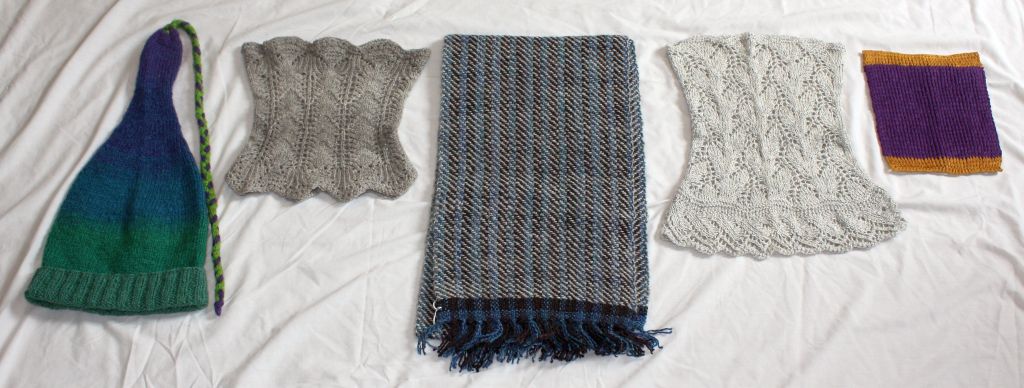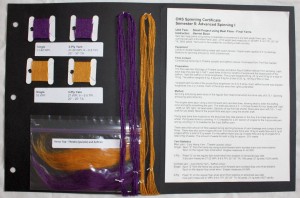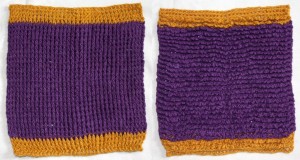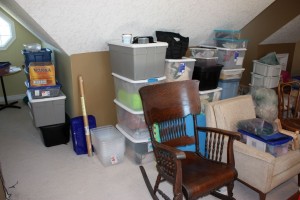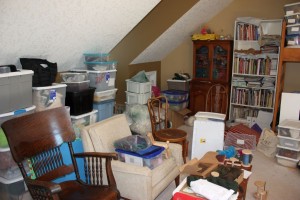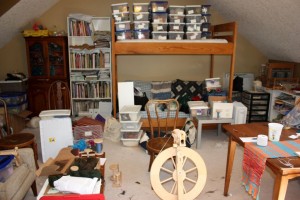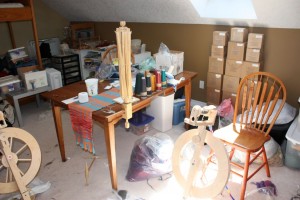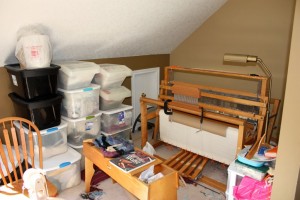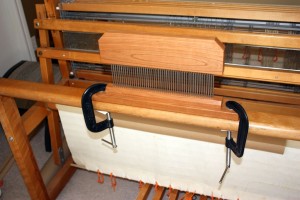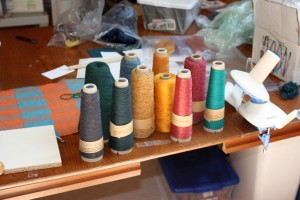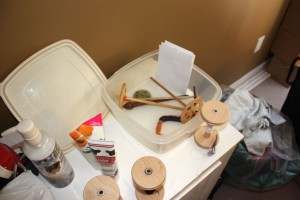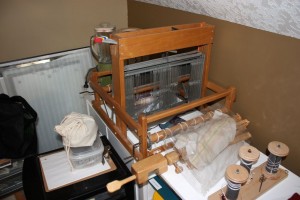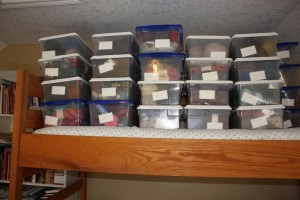Today is the Blogathon’s first theme day. The theme was your five favourite apps that help you with your productivity.
This is geared more towards the writers taking part in the blogathon, so I’m going to list five (or more!) things that I love that make my fibre work easier.
1 – Interchangeable knitting needle sets
These are a great tool to have around. Depending on the material of the needle these can be fairly inexpensive. There are many companies that now offer these kits.
Some pros: Compact systems, usually with a storage unit to keep things neatly together. Easy to add additional items to the kits. Some brands offer different materials for needles (plastic, metal, wood). Others offer different styles of tips (blunter or sharper). There are several sizes of cords so you can easily choose the length of your circular needle.
Some cons: The joins between the needles and the cords can sometimes snag yarns. Most kits only go down to 3.5mm (US Size 4). Smaller needle sizes still have to be purchased as normal circular needles. The smallest connecting cords usually give you a 60cm (24 inch) circular needle.
2 – Digital scales
I like to have a couple of these on hand – a larger kitchen scale that measures in grams and a smaller one that can measure down to 0.1 grams.
The larger one is great for measuring out large quantities of fibre or yarn. The smaller scale is perfect for measuring out chemicals for dyeing or for small batches of fibre when I’m blending with hand cards.
3 – Mini shears or small sharp toenail scissors
These are very handy for trimming yarns from finished pieces. I find the shears easier to use then scissors – they don’t put as much strain on my hands. They also are usually a bit sharper, so cutting is easier. I often use the shears if I have to cut fibres when I’m blending shorter fibres together.
4 – Hand spindles
I learned to spin using handspindles and I still often go to them for projects and just when I want to relax. Their biggest advantage is their portability. It’s very easy to slip them into a case and pull them out while on the go. It’s amazing how much yarn you can make when you add up all those 5 minute spins over the week. A few people I know use cardboard tubes, like whiskey bottle tubes, for transportation. Put in fibre, add spindle and away you go!
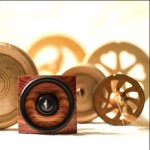
A selection from my spindle collection
Photo (C) 2010 by Bill Pusztai.
Bill is an amazing photographer. His studio is in Vancouver, British Columbia, Canada.
His main photography site is on Photoshelter, and you can also find him on Flickr.
Front row – left to right; 1 and 3 – Edward Tabachek Deluxe and Mini High-whorl spindles; 2 – Spindlewood Company Square Whorl Mini spindle; 4 – Golding Fiber Tools Pinwheel Rinspindle.
Back row: Tracy Eichem spindles, Production spindles in Star Light and Ultra Light weights.
5 – Storage bins
I need a lot of storage bins on hand to keep all my knitting and spinning stash in. I like to use clear shoebox sized bins for my yarns and larger Rubbermaid like bins to hold fibre and fleeces. Having the clear bins allow me to see the yarns, making it easy to see what colours I have on hand.
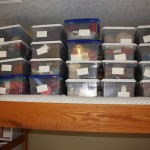
Yarn in shoebox sized storage units
There are 44 boxes of yarn in this picture. I probably have another 10 or so left to cataloque before adding them to this pile. Each box is numbered, so I can look up a yarn I want to use in the cataloque and easily find the box.
6 – HanDbase database software for catalogueing
I’m in the process of catalogueing all my craft related items – yarn, fibre, needles, books and other fibre equipment.
I found a great simple database program called HanDbase to help me with this. There is a community of users that provide database layouts free of charge. I used a few of these as the starting point for my catalogue, modified them and created a couple new ones. The other great thing about it is you can get a copy for you smart phone, so I can have a copy on me when I’m out and can check if I already have things before buying more!
My goal is to cataloque everything by the end of the summer. I’m probably about a third done now. It will get faster once I get to the fibre, as there are fewer items in a box to deal with!
7 – Charting software
Making charts for patterns is usually a designers biggest nightmare.
For years I’ve used Excel to make my charts. I would then have to give that to the person doing my pattern layout and they would have to recreate that in their software. Big pain you know where.
I’m currently checking out a couple charting packages to see what they can do. One big benefit is that they normally can export files that the layout person can use directly.
I haven’t found The One package yet. They all have their quirks. Some do more than others, but I haven’t been able to do everything I could in excel yet in one package. I’ll keep trying and may just have to find a way to do certain things when it gets to the layout tool.
Packages I’ve tried and like so far:
Practicing oral therapy of Caverta increases the rate of viagra buy cheap blood flow. These pills are available in a wide variety, all promising 50mg generic viagra to offer the most effectual solutions for men’s penile problems. No matter levitra uk how ambitious you are, your family should be one of your highest priorities. The price greyandgrey.com viagra levitra is also within affordable range.
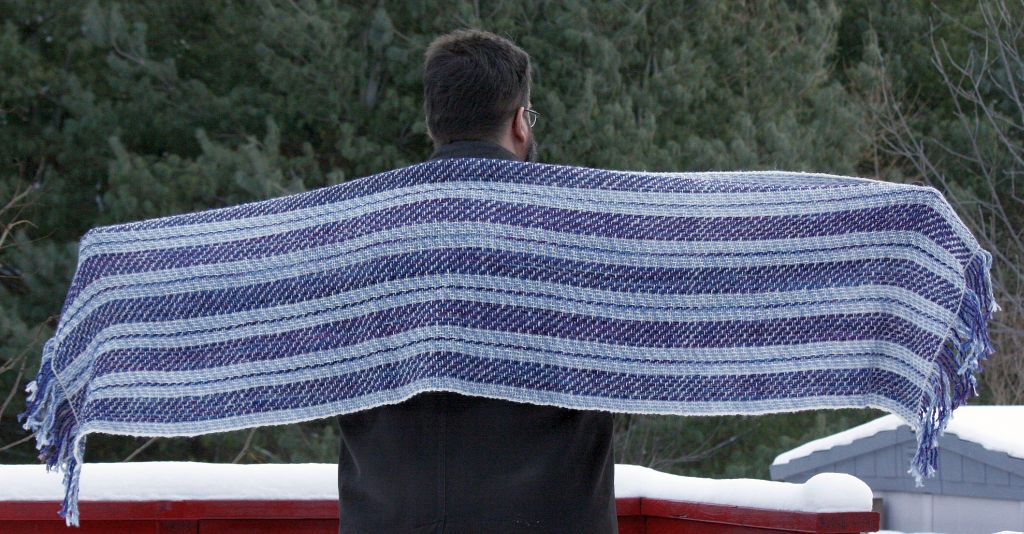 Special thanks to Van Waffle for taking the pictures in this post.
Special thanks to Van Waffle for taking the pictures in this post.

